Revisiting the Dating of the Earliest Zhangzhou (Swatow) Blue and White
The earliest production date of Zhangzhou ware remains uncertain and highly debated. Some known shipwrecks, such as the San Isidro, Nanao 1, and Blanakan, are believed to have carried some of the earliest known Zhangzhou wares. However, the dating of these wrecks varies significantly, with proposed timeframes ranging from the late Jiajing period to early Wanli.
Recently, I read the excavation report of the Ko Kradat wreck, located near southeastern Thailand and salvaged between 1978 and 1980. The cargo primarily consisted of Thai iron-black painted wares, brown-glazed jars/jarlets, and some Chinese blue-and-white fragments. Of particular interest were two fragments of Zhangzhou blue and white ceramics featuring floral motifs painted with calligraphic strokes.
Another notable wreck with a cargo containing both Zhangzhou and Thai Sawankhalok iron-black painted ware is the San Isidro from Philippine waters. However, only two jarlets with iron-black painted decoration were found. Given the small quantity, it remains uncertain whether these jarlets were part of the original cargo or simply older items belonging to the sailors, potentially unrelated to the contemporaneous Zhangzhou wares.
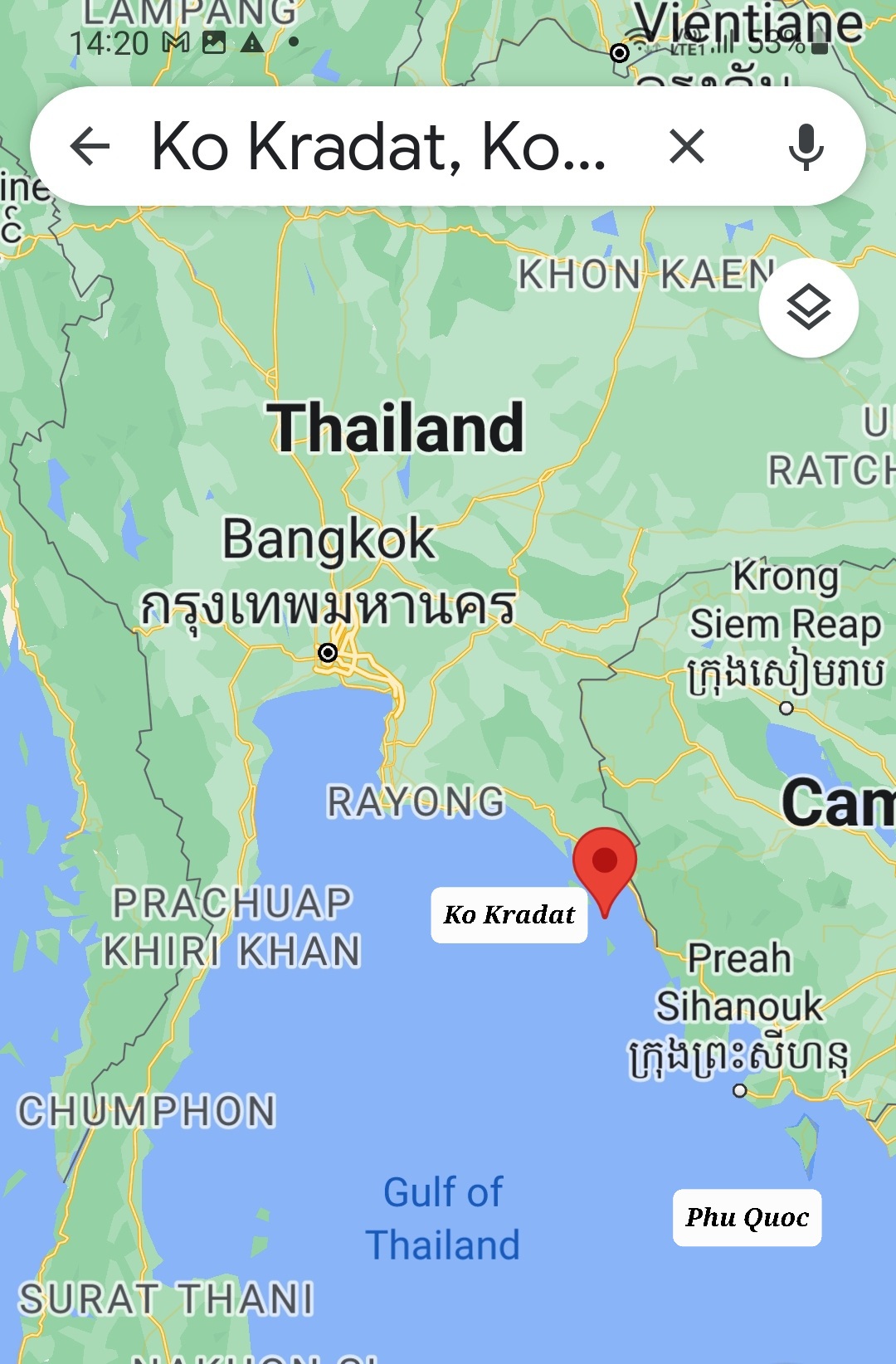 |
| Map showing location of Ko Kradat Wreck |
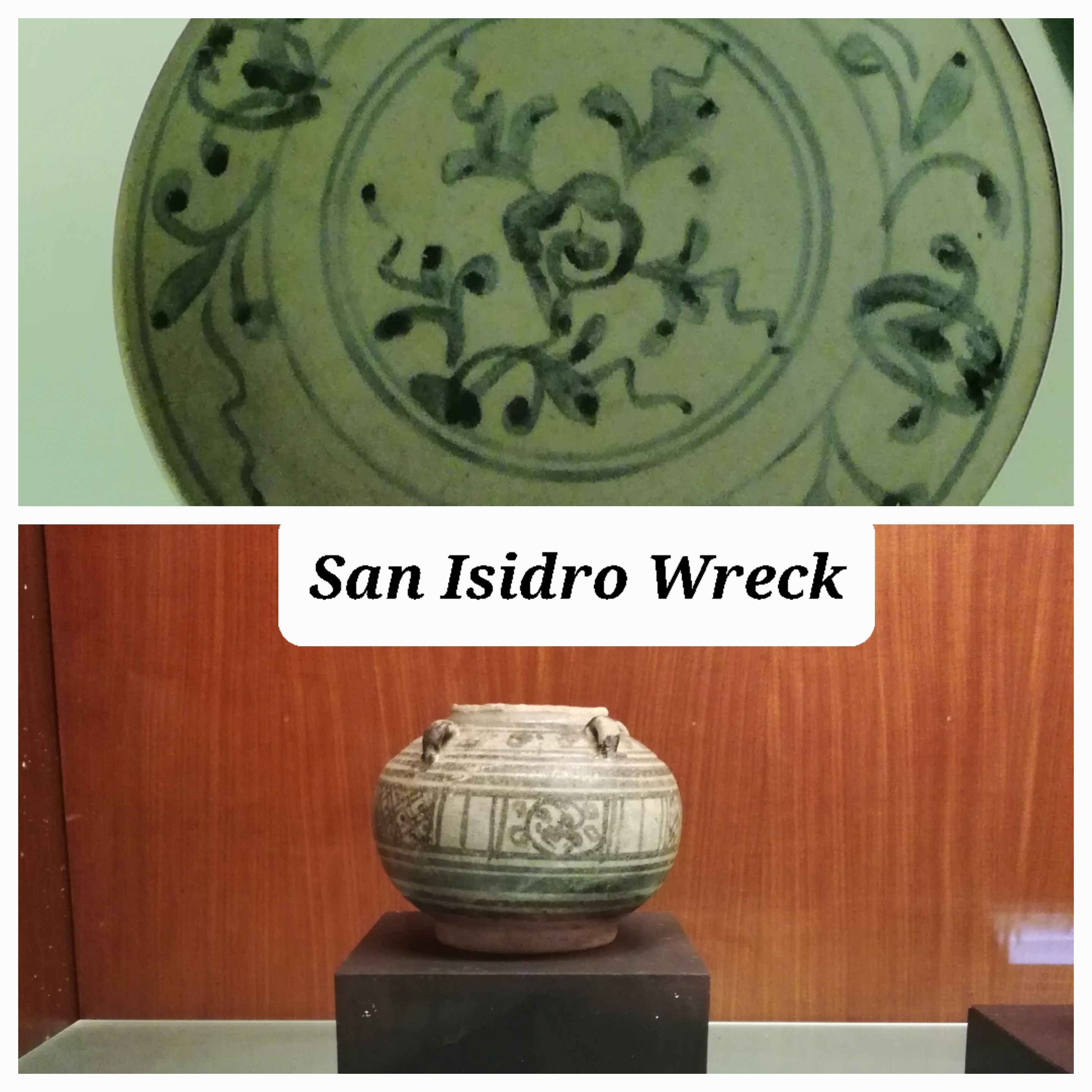 |
||
| Calligraphic style floral design Zhangzhou blue and white Plate and a Sawankhalok Jarlet from the San Isidro Wreck | ||
Insights from Thai Sawankhalok Wares
The dating of Thai Sawankhalok iron-black painted wares may provide valuable clues regarding the earliest Zhangzhou blue and white. These wares were initially assigned a late Ming Wanli dating. However, subsequent discoveries and research conducted on the Xuande, Phu Quoc 1, and Singtai wrecks suggest a production timeframe of approximately 1530–1560 A.D.
The emergence of these wares was likely a response to declining demand for Thai celadon due to the growing popularity of Chinese and Vietnamese blue-and-white ceramics. Interestingly, Thai potters either could not access cobalt or opted to use iron oxide as a colorant for their decorated wares. Despite this difference, the motifs and composition of these wares reveal clear Chinese and Vietnamese influences.
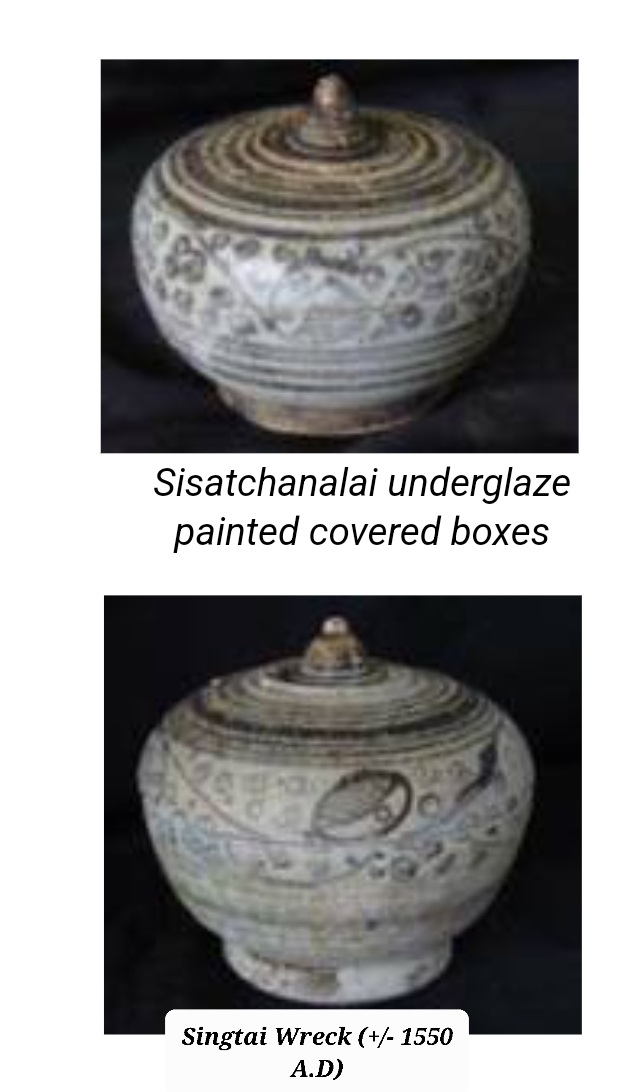 |
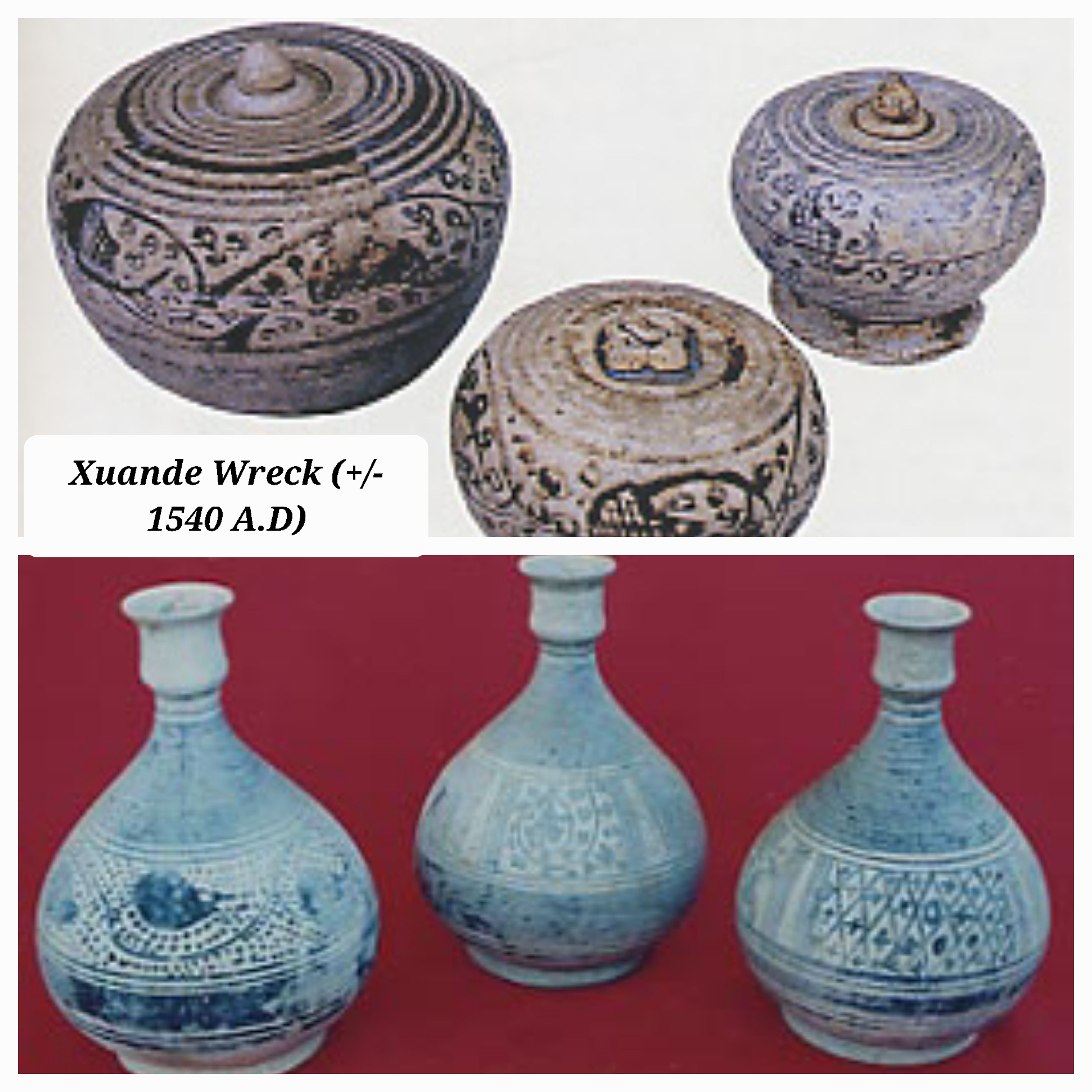 |
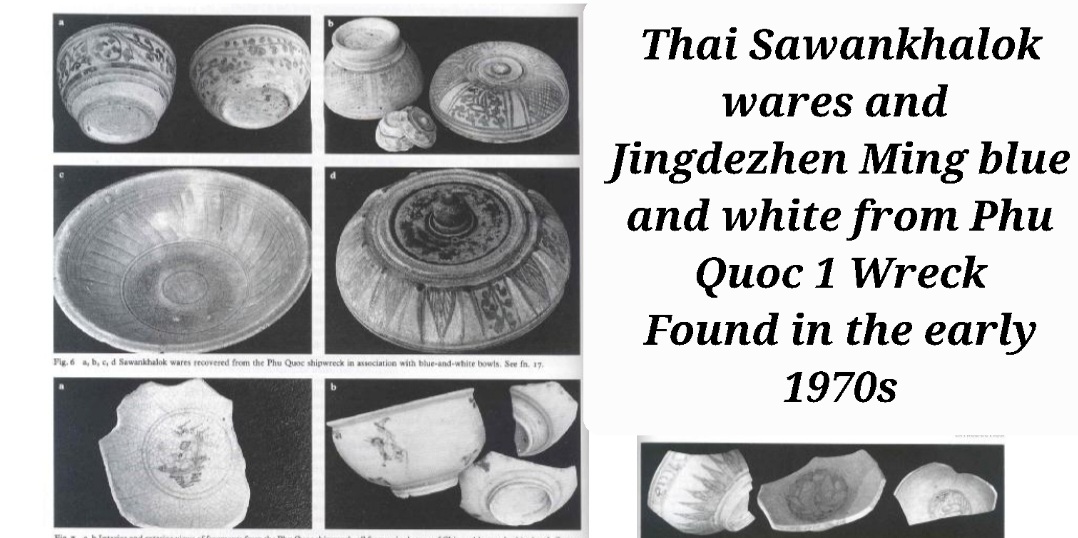 |
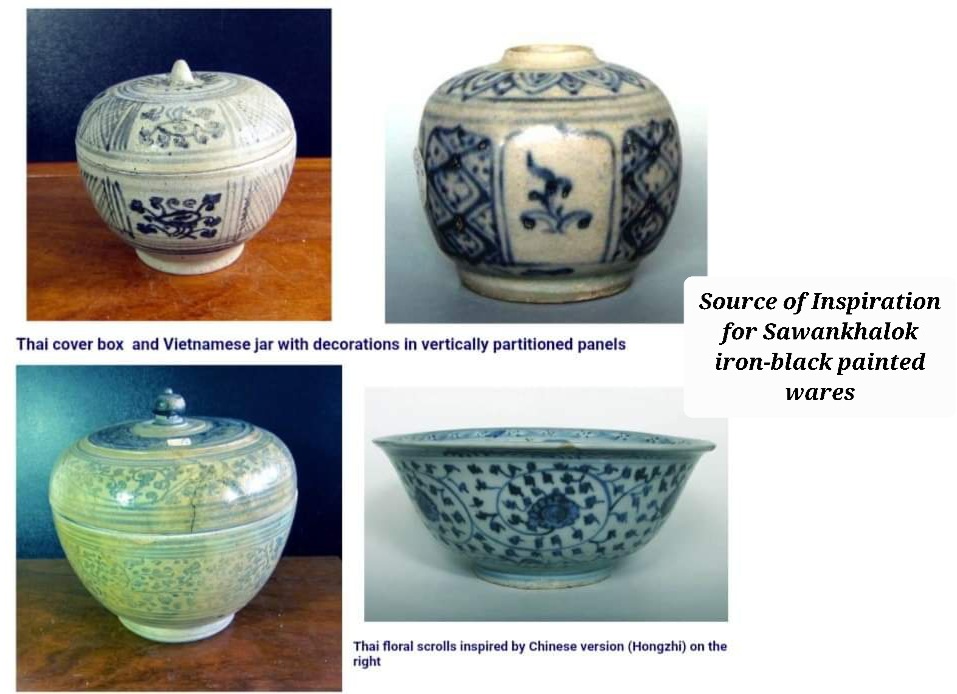 |
| Sawankhalok iron-painted designs draw inspiration from Vietnamese and Jingdezhen blue and white. |
Dating Considerations and Stylistic Comparisons
Among the Zhangzhou fragments recovered from Ko Kradat, one bears a Jiajing mark on its base. This suggests that the wreck dates to the Jiajing period or later.
Additionally, a bowl fragment featuring grapevine decoration on the interior and a pine tree motif on the exterior was erroneously identified in the Ko Kradat report as Sawankhalok ware. Interestingly, similar bowls were salvaged from the Blanakan and Nanao 1 wrecks in Indonesia. The stylistic similarities between the Ko Kradat and Blanakan fragments are notable, whereas those from Nanao 1 appear more sketchily drawn and less refined.
When comparing the Zhangzhou wares from Ko Kradat, Blanakan, San Isidro, and Nanao 1, it becomes apparent that the calligraphic strokes on the blue-and-white motifs from Nanao 1 are more free-flowing but lack the control and elegance observed in the other three wrecks.
Examining the blue-and-white ceramics from the San Isidro wreck reveals that some motifs and compositions bear similarities to Jingdezhen wares from the Hongzhi/Zhengde period. In contrast, the pieces from Nanao 1 exhibit a more evolved style, with increasingly distinct motifs and compositions.
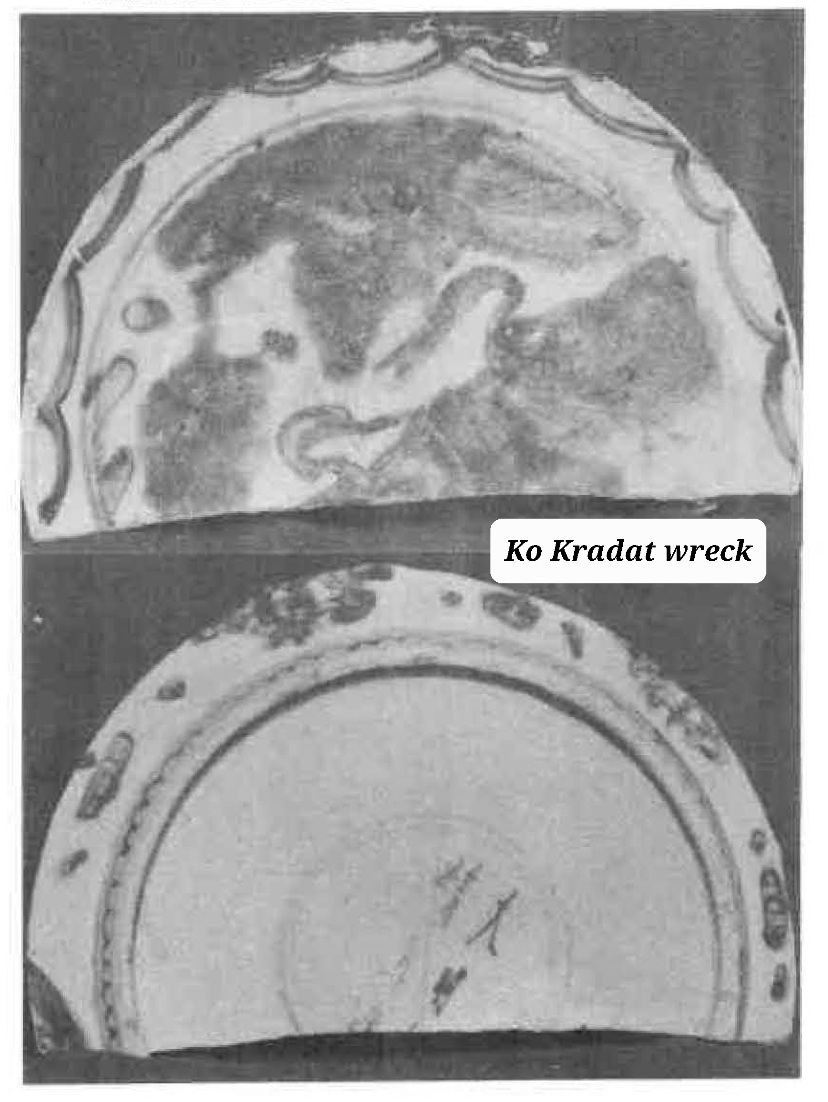 |
| Fragment with the Made in Ming Jiajing Mark |
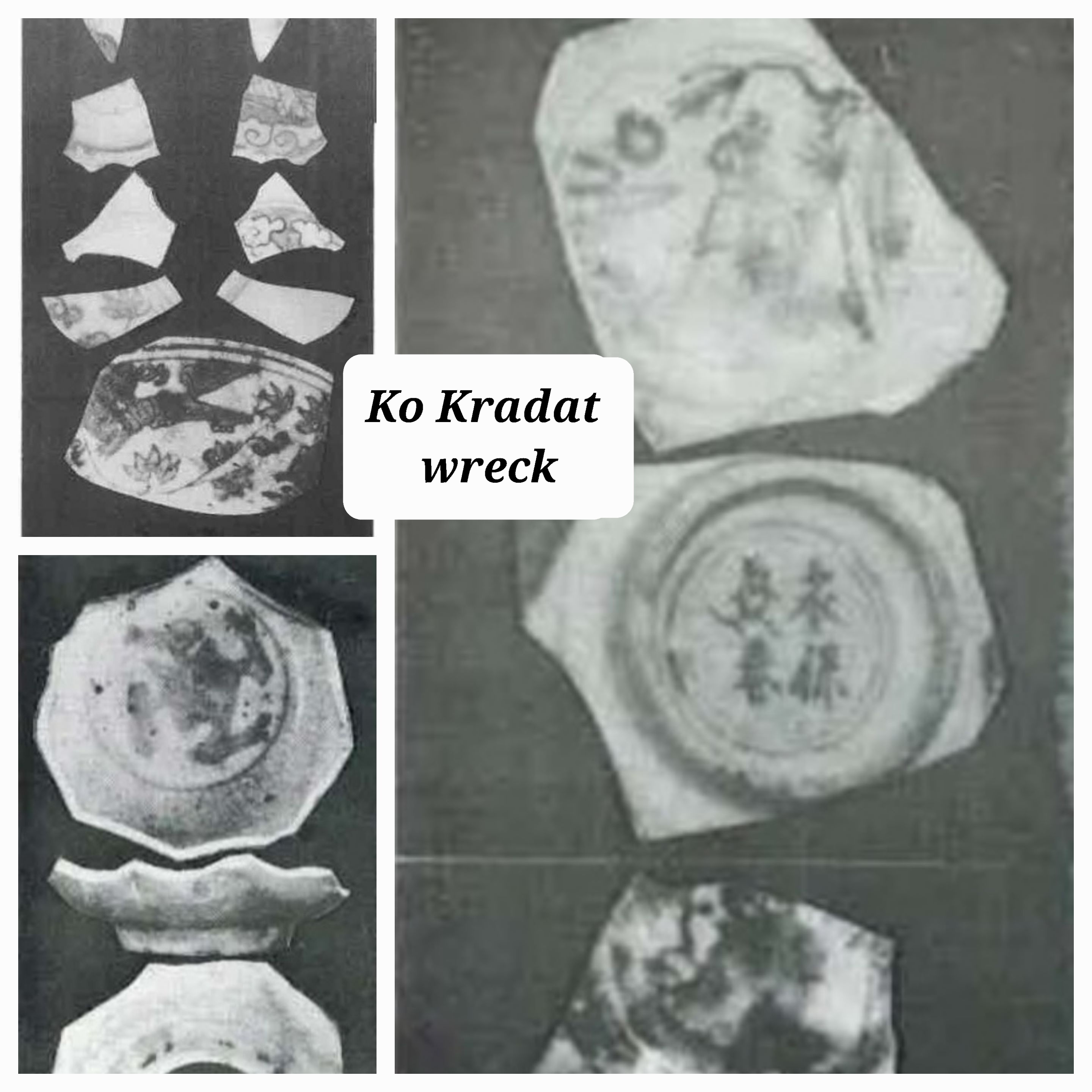 |
| Some Ming blue and white fragments from Ko Kradat wreck |
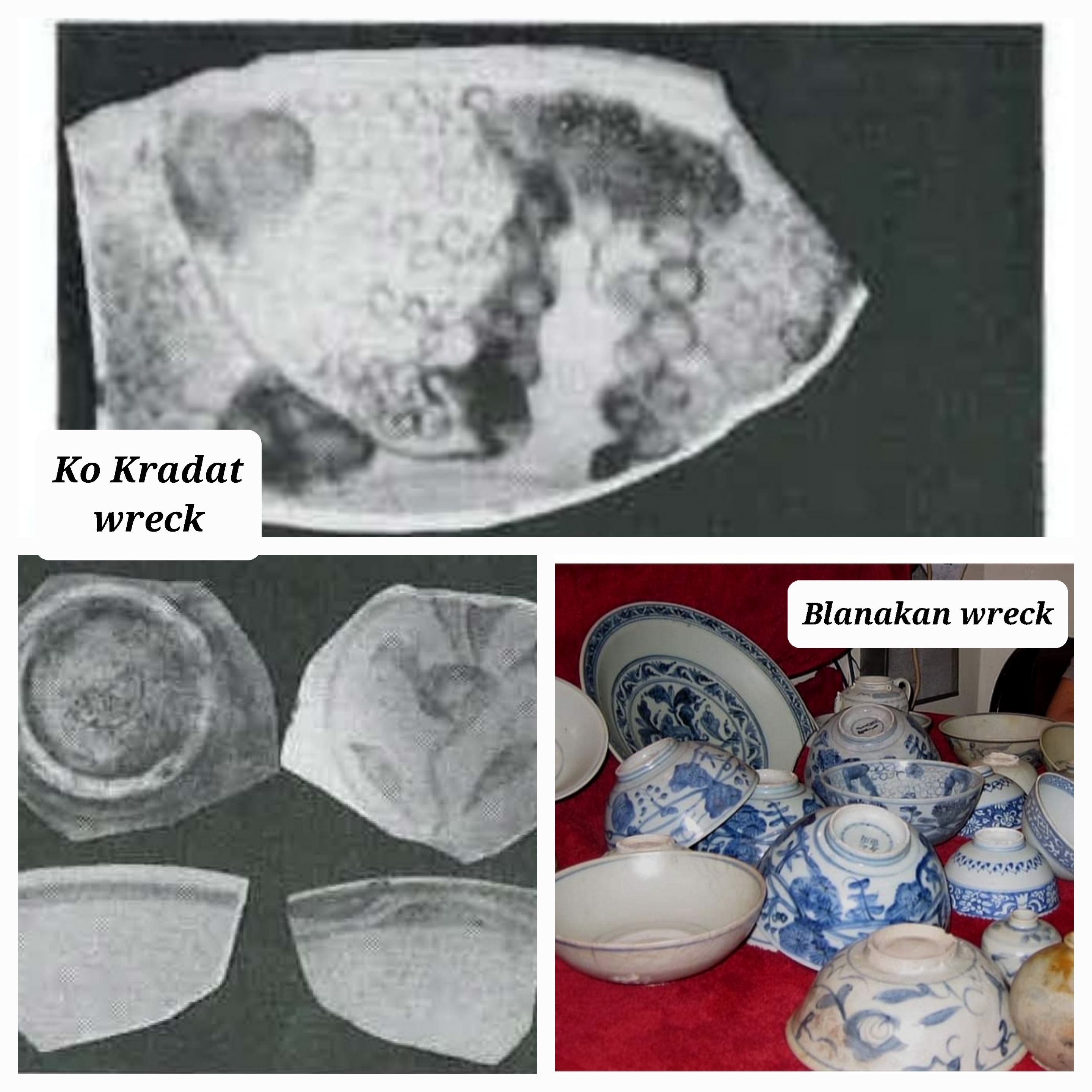 |
| Two Zhangzhou fragments from Ko Kradat (Bottom Left). Stylistically similar to that of a bowl from the Blanakan wreck (Bottom right). The Jingdezhen bowls with grapes/vines design are also stylistically similar. |
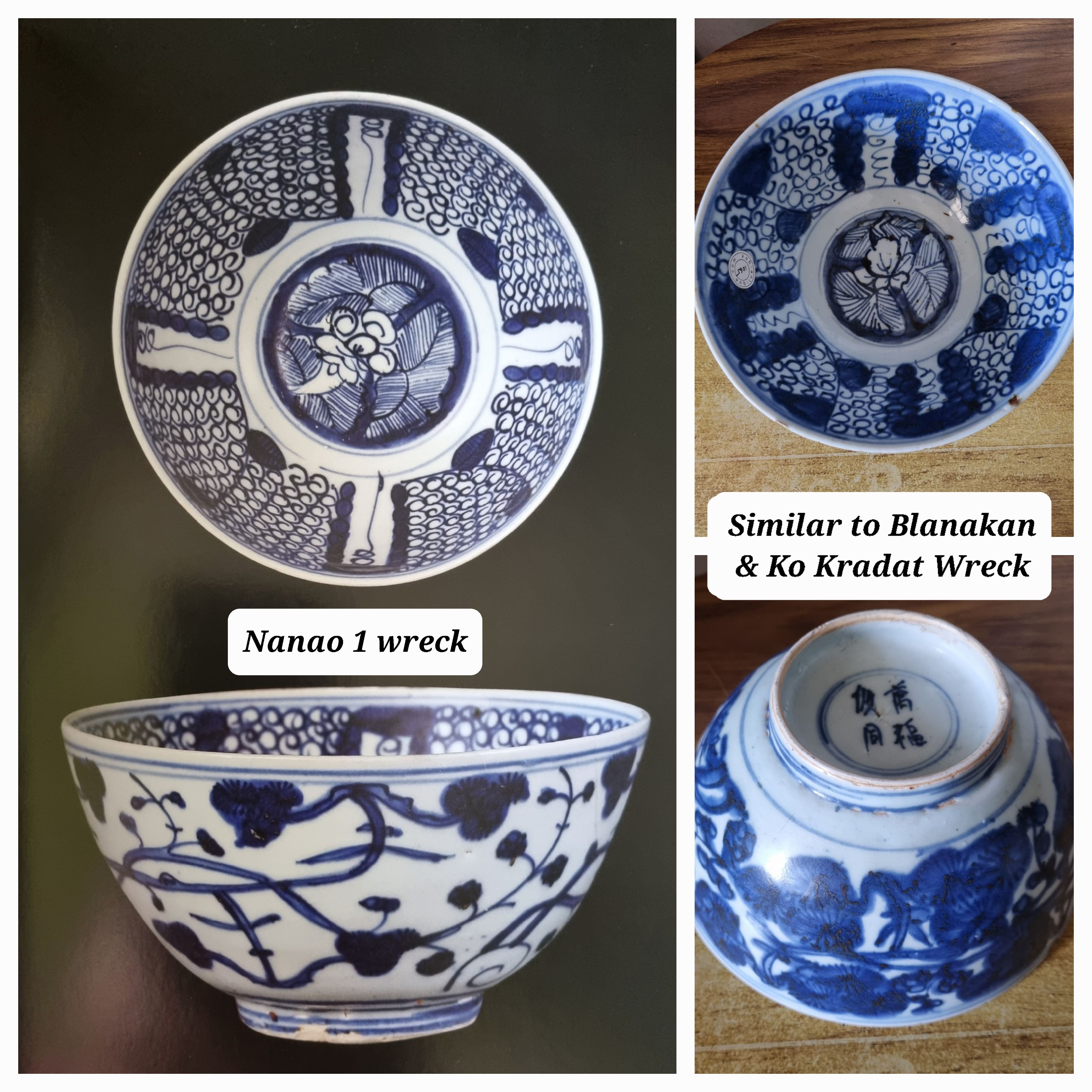 |
| Jingdezhen bowls of grapes/vine design from Nanao 1 wreck is more sketchy as compared to those form Blanakan and Ko Kradat Wrecks. |
.jpg) |
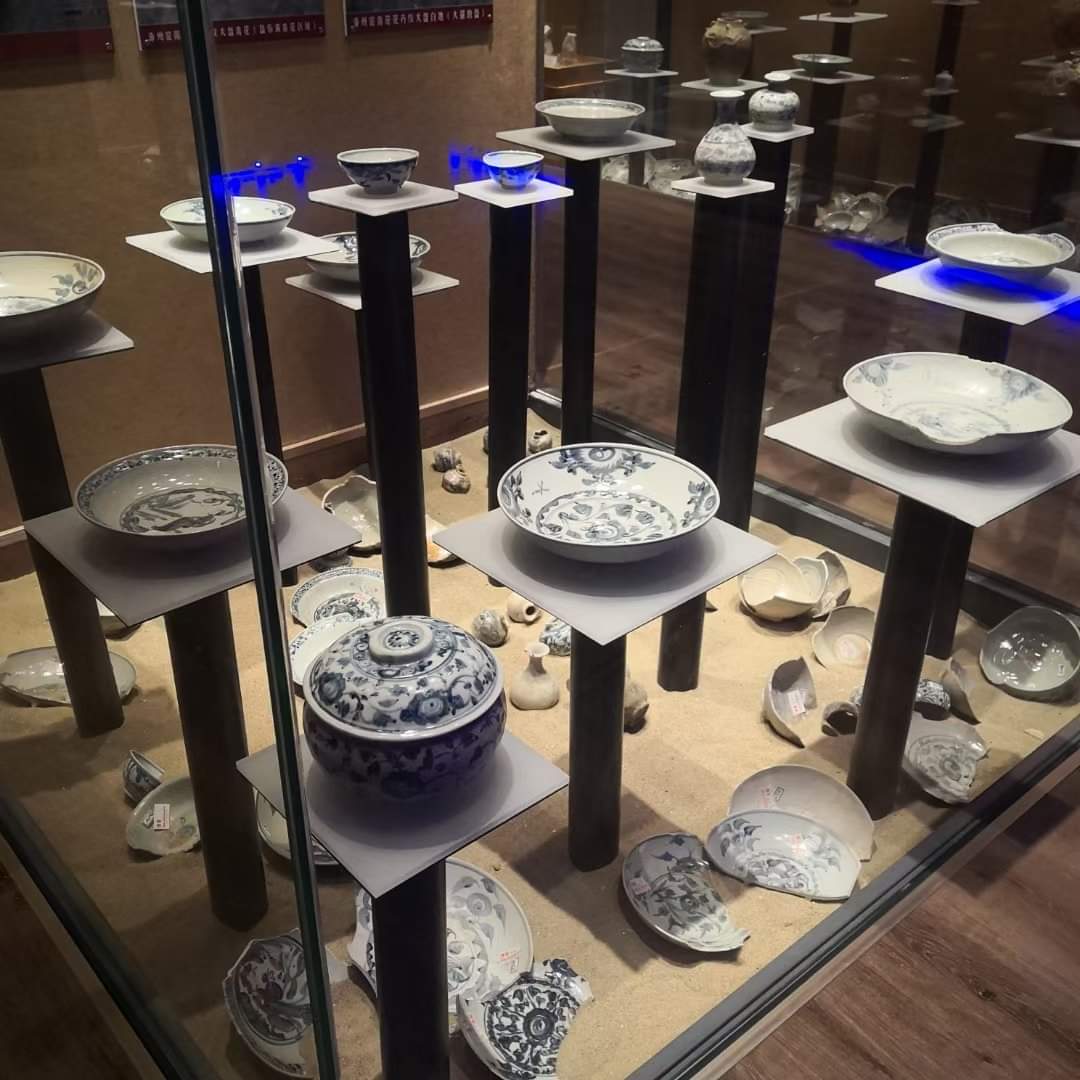 |
| More examples from the Nanao 1 wreck |
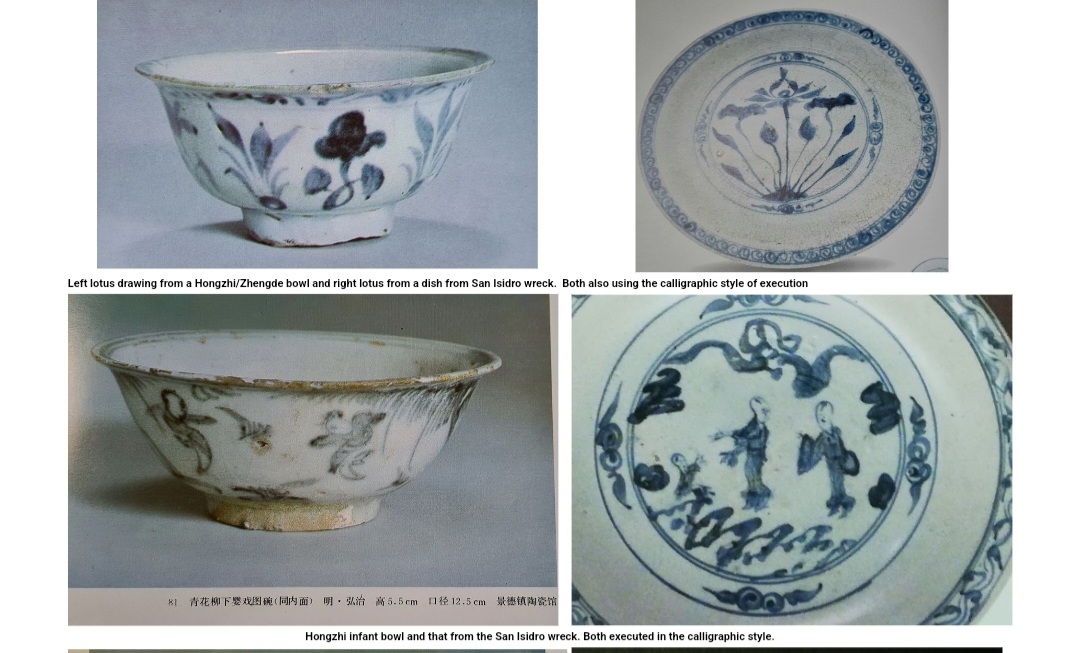 |
| The calligraphic style of the motifs from Jingdezhen and San Isidro Wreck shared much similarity. |
Scientific Analysis and Conclusion
In 2019, the Shanghai Museum conducted thermoluminescence (TL) testing on two Jingdezhen samples from the Nanao 1 wreck. The results yielded a date range of 490±40 and 498±50 years, indicating a terminus ante quem of 1569–1571 A.D., which corresponds to the 3rd to 5th year of the Longqing reign (1567–1572 A.D.).
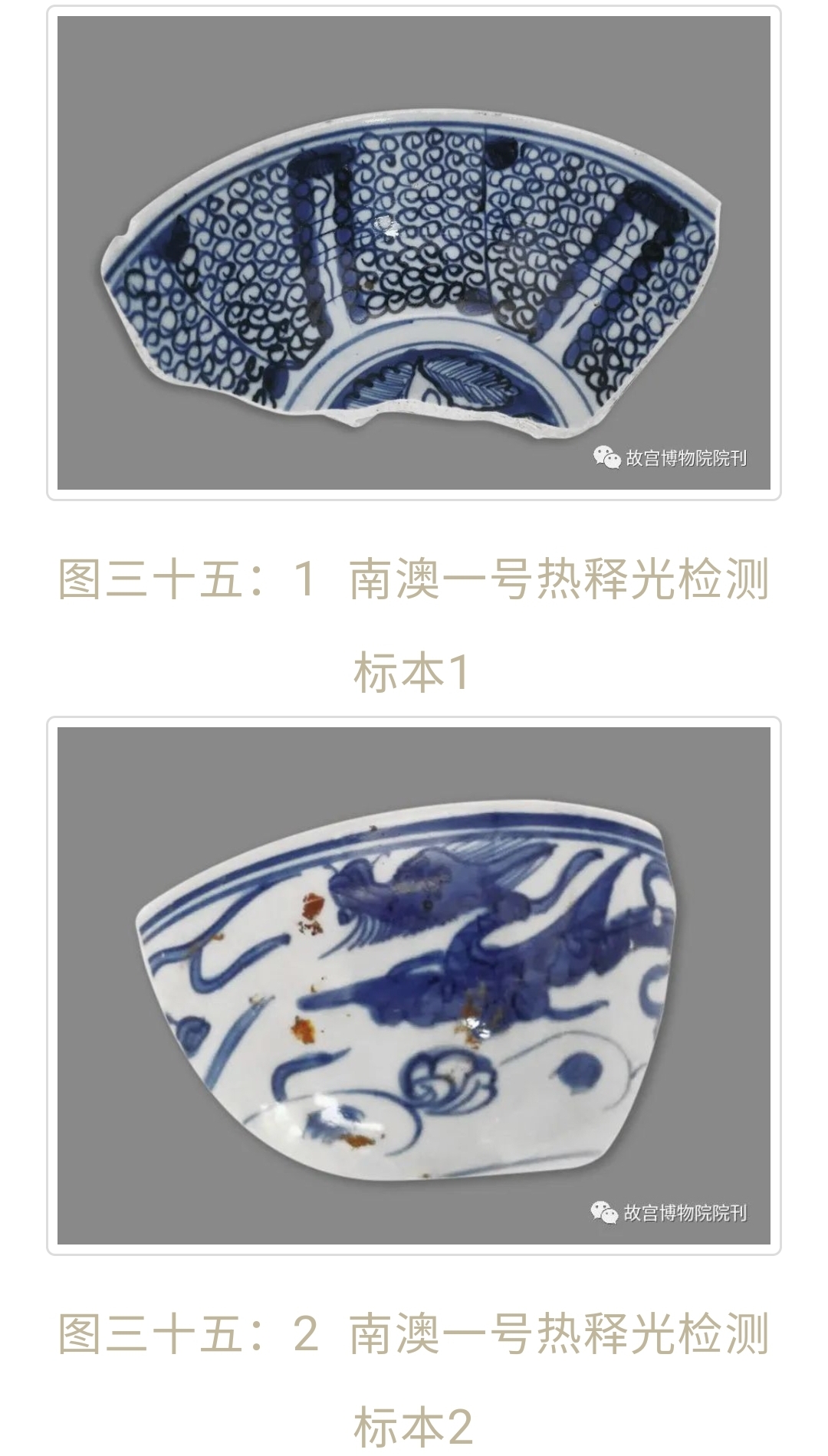 |
| Two samples from Nanao 1 wreck TL tested |
These findings suggest that the earliest Zhangzhou blue-and-white production likely began before or around this timeframe. The stylistic evolution of Zhangzhou ware, particularly when compared to Jingdezhen blue-and-white ceramics, further supports the notion that production began in the mid-16th century (towards the closing years of Jiajing reign) )rather than later in the Wanli period.
While uncertainties remain, the combination of shipwreck evidence, stylistic analysis, and scientific dating points to a significant revision of the established timeline for early Zhangzhou blue-and-white ceramics. Further excavation, analysis, and interdisciplinary research will be crucial in refining our understanding of its origins and production chronology.
Written by: NK Koh (10 Jun 2022), updated: 15 Feb 2025